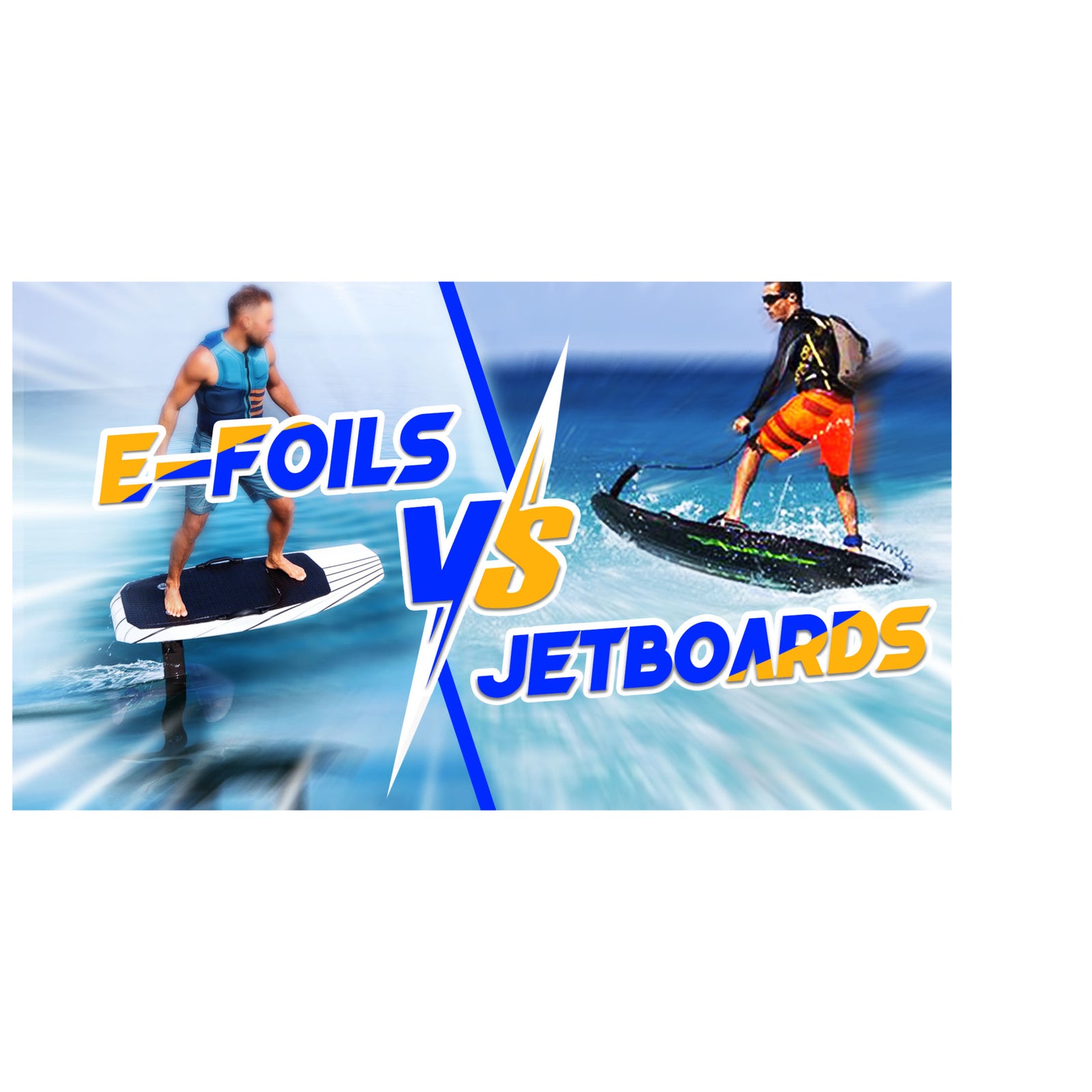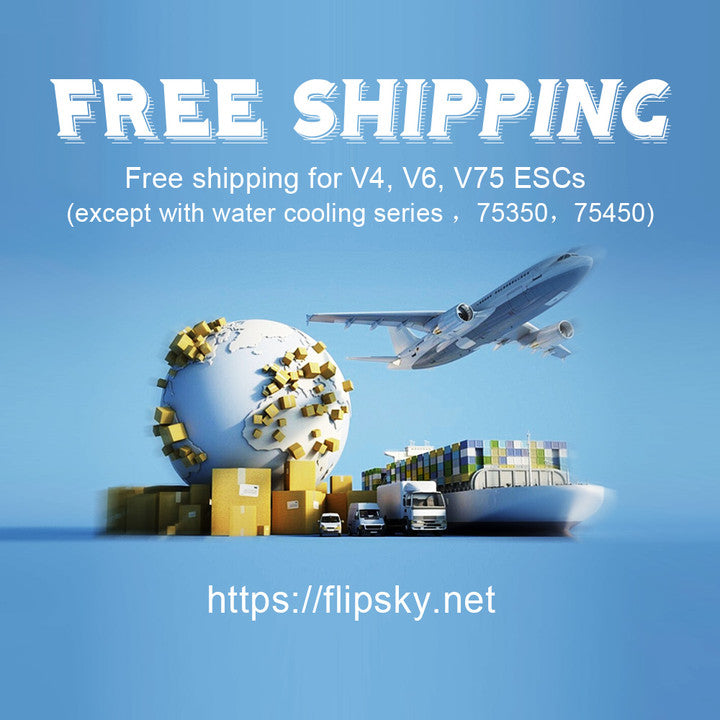Differences Between Jetboards and Efoils

"Efoil is silent and smooth, while Jetboard is repid and fun."
Though both of them are water sports products, they are fundamentally different in terms of design, functionality and users experience. In this blog, we will analyze the differences between Efoil and Jetboard from different aspects.
-
E-FOIL

An E-foil is an electric-powered board equipped with a propeller and a unique hydrofoil design that lifts the rider up from the water after achieving a certain speed making the effect of “levitating”. Unlike traditional foil boards, the E-foil does not need the power of waves to raise above the water since being powered by an electrical system, which makes them ideal for flat waters like lakes and calm seas.
-
JET board

The traditional Jetboards use fuel as power, and the E-Jetboards use battery and electric motor to propel the rider through the water at high speed. The driver of the Jet board is at the end of the board and does not have turning ability, so the sporty Jet boards are always equipped with foot straps and handles to make turning easier. These Jet boards have powerful motors that make surfing repid and fun.
- SPEED
If you want to experience the thrill of water surfing, Jetboard is your best choice. When it comes to speed, the jetboard comes out on top. If you like high speeds of up to 60 km/h and want to corner steadily, you should consider a jet board.
The common cruising speed of Efoil is generally 25-35km/h, even if the supplier claims that the top speed can reach 50km/h or more. Since Efoil needs to be floated above the water surface for riding, a fall at 50 km/h on an eFoilboard would be a lot more dangerous and painful than at 60 km/h on the water surface.
|
Data comes from jetsurf usa & e-surfer |
E-foil |
Jetboard |
|
Top Speed |
40MPH/65KMH |
20-30MPH/30-50KMH |
|
Range |
60mins(Fuel) 25-55mins(ELECTRIC) |
90-120mins |
|
Weight |
40-50kg |
25-35kg |
|
Weight Limit |
120kg |
100kg |
|
Difficulty Level |
4/10 |
8/10 |
|
Power by |
Fuel or Electric |
Electric |
|
Safety |
8/10 |
5/10 |
- TECHNICAL DIFFERENCES
· Drive System
Jetboards use jet drive, while Efoils use propeller drive.
Jet drive use an impeller pump to draw water in before forcing it out in a high velocity jet that moves the boat forward. Propeller driven boats use a propeller to push the water away from it, moving the boat as a result.
Due to the way it works and drags in water, jet drives are less efficient than propeller drives.

· Range
Most Jetboards last about 25-55 minutes, while most Efoils last about 90-120 minutes.
There are two reasons. First, jet drives are less efficient than propeller drives. Secondly, the water resistance and displacement energy is many times higher with a jetboard. As soon as an E-Foil takes off, the energy consumption decreases by up to 70%.
As a result, E-foil batteries not only last longer, but they are also smaller and lighter. And they usually charge faster. In general, an eFoil including battery is about 30 kg while a jetboard can weigh 50 kg or more. Simply more power is needed for a Jetboard. While an eFoil can handle riders over 100 kg with 5 kW, a jetboard would need at least 10 kW.
·Safety installation
A jetboard should definitely have a leash with safety magnet (kill switch). This leash is attached to the rider. The kill switch has two functions. First, the engine can not be started accidentally as long as the magnet is not attached. On the other hand, the motor switches off immediately if you fall. When you fall, the magnet is pulled out of the device and stops the motor.
But kill switch not with the eFoil, the eFoil can not go on without a rider. In addition, the motors switch off as soon as the remote controller falls into the water. A leash would not only be a nuisance on an eFoil, but could also get caught in the mast or wing.

- DIFFICULTY LEVEL
JETSURF boards are an easier option for beginners due to their user-friendly design that caters to almost everyone. The stable hull shape, bindings, and control handle, which are seamlessly connected to the board by a wire, make it easier to maintain balance and achieve extra stability and control.
In contrast, eFoils require more time and effort to master, because an e-foilboard is very sensitive to weight shift as soon as it takes off. So you have to have a good sense of balance.
From another point of view, since Jetboard slides close to the water surface, while Efoil needs to be floated above the water surface, Efoil players will face more uncertain risks when they fall into the water by mistake.

- TERRITORY
First of all, it is necessary to clarify the speed and noise restrictions of local laws on water sports equipment. Some Jetboards are driven by fuel. So the legal aspects can have an influence on the choice whether to buy a Jetboard or eFoil.The reason for this is the increased noise emissions due to the jet drive as well as the wave impact, which does not occur with the eFoils.

But there are also area-specific hurdles for the E-foil. Shallow water or sandbars, for example. To ride an eFoil, the water should be at least 1.20 meters deep, otherwise it can happen that you touch down.
Hope this blog can be helpful to everyone. Enjoy the summer and thank you for watching.
For more tutorials and new product introductions, please follow our social media:
https://www.youtube.com/c/FlipskyTech









Leave a comment